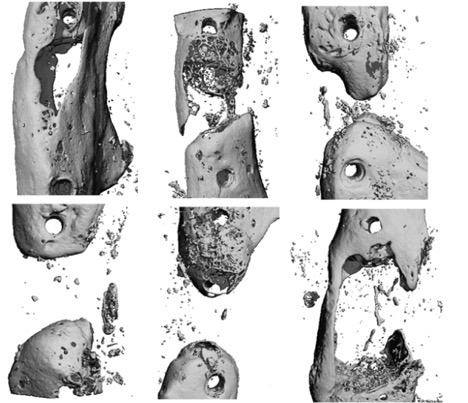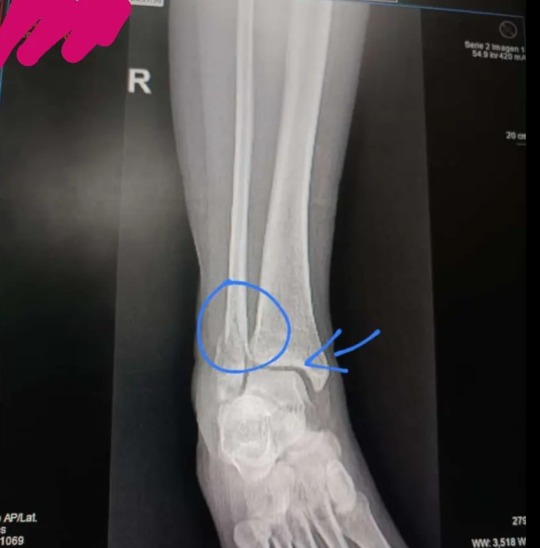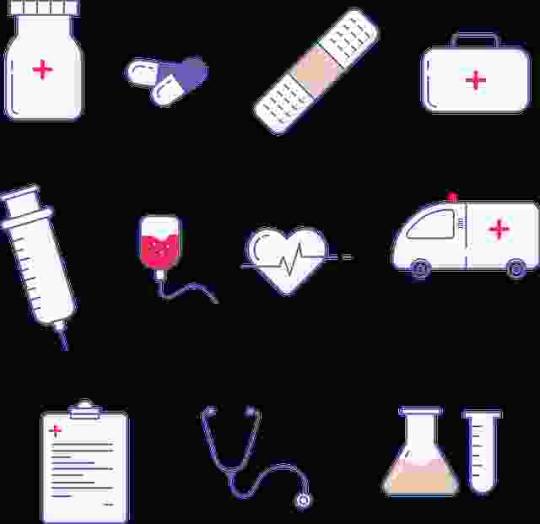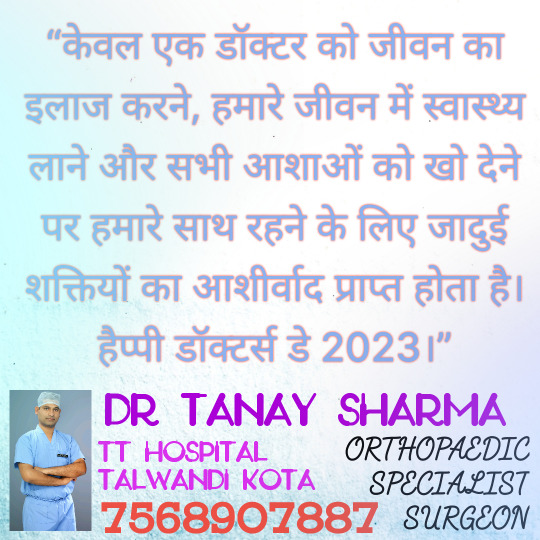#bone fracture
Text

╢Personal work and characters╟
Just some symbolic subjects of Zlaromir's character.
#artists on tumblr#small artist#digital art#original art#illustration#oc art#digital illustration#macabre#dark art#dark surrealism#surrealism#crow#raven#ribcage#triangle#downward triangle#bone fracture#oc artist#original character#caged#my artwork#w&w tag#zlatomir tag#oh hey that's my super old tumblr name#backlog#2016 tag
234 notes
·
View notes
Text
Sprains grew up wanting to be real fractures but didn’t get the grades, they’re just really angry and try their best to imitate a fracture so your ankle still hurts like a bitch but oh well time for painkillers and walking it off because your bones are still intact.
9 notes
·
View notes
Photo

Fractured Relationships
Break a bone and a frenzy of activity ensues to repair it. Bone-forming cells (osteoblasts) and their precursors (osteoprogenitors) take charge. However, fractures don’t always heal well. Consequently, growth factors are sometimes given to promote healing, specifically BMP which promotes bone formation and PDGF-BB which maintains osteoprogenitor numbers. Researchers investigate how they work in a mouse bone fracture model. MicroCT of fractured bones (pictured) revealed that adding high dose BMP, low dose BMP or PDGF-BB (top, left to right) promoted bone regeneration compared with no treatment (bottom left) or combining different BMP doses with PDGF-BB (bottom middle and right). Analysing the cell types revealed that BMP2 alone increased osteoblast and osteoprogenitor numbers but failed to do so when combined with PDGF-BB. While separately BMP2 and PDGF-BB promote bone healing, together they have the opposite effect. Further unpicking their interactions may help advance bone healing treatments.
Written by Lux Fatimathas
Image adapted from work by Sanja Novak and colleagues
Center for Regenerative Medicine and Skeletal Development, UConn Health, Farmington, CT, USA
Image originally published with a Creative Commons Attribution 4.0 International (CC BY 4.0)
Published in npj Regenerative Medicine, January 2023
You can also follow BPoD on Instagram, Twitter and Facebook
8 notes
·
View notes
Text

Book for sale * Sir Reginald Watson 1946 Jones Fractures and Joint Injuries * Volume II 3rd ed
https://www.ebay.com/itm/385033680303
Bone Fracture, Medical Condition, Accident, Radiographic imaging. Medical Conditions Explained. Black and White Illustrations
bookshop #books #reading #forsale #medicine #read #enjoyable #pleasurable #bones #history #study #education #textbook #Fractures
#Book for sale * Sir Reginald Watson 1946 Jones Fractures and Joint Injuries * Volume II 3rd ed#https://www.ebay.com/itm/385033680303#Bone Fracture#Medical Condition#Accident#Radiographic imaging. Medical Conditions Explained. Black and White Illustrations#bookshop#books#reading#forsale#medicine#read#enjoyable#pleasurable#bones#history#study#education#textbook#Fractures
2 notes
·
View notes
Text
Bone Fractures: Types, Symptoms & Treatment
Bone fractures are common injuries that occur when there is a break or crack in a bone. These fractures can happen due to trauma, such as falls, accidents, or sports injuries, or as a result of conditions that weaken the bones, such as osteoporosis. Understanding the types, symptoms, and treatment options for bone fractures is crucial for proper management and recovery.
Types of Bone Fractures:
Closed Fracture (Simple Fracture):
In a closed fracture, the bone breaks but does not penetrate the skin.
This type of fracture may still cause swelling, bruising, and pain at the site of injury.
Open Fracture (Compound Fracture):
An open fracture occurs when the broken bone pierces through the skin, exposing it to the outside environment.
This type of fracture carries a higher risk of infection due to the open wound.
Stable Fracture:
In a stable fracture, the broken ends of the bone are still aligned and do not move out of place.
This type of fracture typically requires immobilization for proper healing.
Transverse Fracture:
A transverse fracture occurs when the break is perpendicular to the long axis of the bone.
It often results from a direct blow to the bone.
Comminuted Fracture:
A comminuted fracture involves the bone breaking into three or more fragments.
This type of fracture may require surgical intervention to realign the bone fragments.
Greenstick Fracture:
Common in children, a greenstick fracture occurs when the bone bends and cracks but does not completely break.
It resembles the way a green twig breaks.
Symptoms of Bone Fractures:
Pain: Persistent pain at the site of injury, which may worsen with movement or pressure.
Swelling: Swelling and tenderness around the affected area.
Bruising: Discoloration of the skin due to bleeding under the skin.
Deformity: Visible deformity or misalignment of the limb or joint.
Limited Mobility: Difficulty or inability to move the affected limb or joint.
Bone Protrusion: In cases of open fractures, bone may protrude through the skin.
Treatment of Bone Fractures:
Immobilization: Stable fractures are typically treated with immobilization techniques such as casting, splinting, or bracing to keep the bones in proper alignment and promote healing.
Reduction: In cases of unstable or displaced fractures, a reduction procedure may be performed to realign the bone fragments manually or surgically.
Surgery: Severe fractures, especially open or comminuted fractures, may require surgical intervention to stabilize the bones using internal fixation devices such as screws, plates, or rods.
Medication: Pain relievers and anti-inflammatory medications may be prescribed to manage pain and reduce inflammation associated with the fracture.
Physical Therapy: Rehabilitation exercises and physical therapy are essential for restoring strength, flexibility, and function to the affected limb or joint during the recovery process.
Follow-up Care: Regular follow-up appointments with healthcare providers are necessary to monitor the healing progress, assess any complications, and adjust the treatment plan as needed.
In conclusion, bone fractures can vary in severity and require appropriate diagnosis and treatment for optimal recovery. Prompt medical attention, proper immobilization, and rehabilitation are key components of managing bone fractures effectively and minimizing long-term complications.
#bone fracture#types of bone fractures#trauma#trauma fractures#orthopaedics#best orthopaedic surgeon#top orthopaedic surgeon
0 notes
Text


I fucked it up badly bruuuuh
This has been one of the most challenging, life changing event that has happened to me so far.
6-8 month recovery ahead of me (:
I have surgery in a couple weeks, I'll keep y'all posted
0 notes
Text
The frequency of health checkups for senior citizens can vary based on individual health conditions, risk factors, and recommendations from healthcare providers. In general, seniors should have an annual checkup, but certain screenings or tests may be recommended more or less frequently based on their health status.
Key components of senior health checkups may include:
Blood pressure monitoring: At each visit.Cholesterol and blood sugar testing: Typically done annually, but more frequent monitoring may be necessary for those with diabetes or other cardiovascular risk factors.
Bone density testing: Usually recommended periodically, especially for postmenopausal women and older adults, to assess osteoporosis risk.Vision and hearing tests:
Regular screenings, with the frequency depending on existing issues and age.
Cancer screenings: Such as mammograms, colonoscopies, and prostate exams, according to individual risk factors and guidelines.Immunizations: Stay up-to-date with vaccinations, including flu and pneumonia vaccines.It's important for seniors to discuss their health history, lifestyle, and any concerns with their healthcare provider to determine a personalized schedule for health checkups and screenings.
Regular communication with healthcare professionals ensures a proactive approach to managing health and addressing potential issues early on.
Postmenopausal osteoporosis typically doesn't cause noticeable symptoms until a bone fracture occurs. Common fractures associated with osteoporosis include those of the spine, hip, and wrist. Therefore, the condition may remain silent until a fracture happens. However, some individuals may experience back pain, height loss, or a stooped posture due to vertebral compression fractures. Regular bone density screenings and consultation with a healthcare professional are important for early detection and management.
Get full body health checkup at the best hospitals in India.
#health#surgery#fractures#bone health#bone density#osteoporosis#osteoarthritis#bone fracture#full body health checkup#health checkups
0 notes
Text

Applications of DXA Bone Scans
1. Osteoporosis Detection: DXA bone scans are primarily employed for identifying osteoporosis and assessing the risk of developing this condition. Osteoporosis is typically diagnosed when an individual's bone mineral density (BMD) significantly deviates from the average BMD of a healthy young adult.
2. Evaluating Fracture Susceptibility: By measuring bone density, DXA scans empower healthcare professionals to predict an individual's susceptibility to fractures. Those with lower BMD are at a heightened risk of fractures, even from minor accidents.
3. Treatment Progress Monitoring: For individuals already diagnosed with osteoporosis, DXA scans offer valuable insights into the effectiveness of treatments, which may include medications, lifestyle adjustments, and dietary changes.
4. Body Composition Assessment: DXA scans occasionally find utility in evaluating body composition, including aspects like fat distribution and lean tissue. This is particularly valuable for athletes, individuals managing specific medical conditions, and researchers studying body composition.
You can undergo regular health checkups including DXA bone scans at some of the most reputed hospitals in Mumbai, like full body checkups at Saifee Hospital Mumbai.
#DXA scans#DXA bone scans#osteoporosis#bone mineral density#bone health#bone fracture#full body checkups#regular health checkup
0 notes
Text
Fracturing your ankle? Laaaame
Fracturing your ankle and waking on it for almost a week cause you're convinced it's only a sprain? SMORT
#ankle fracture#bone fracture#fractured bone#foot fracture#fratured foot#text post#im high on weed and norco lmao
0 notes
Text

सुख, शांति और समृद्धि की
मंगलमय कामनाओं के साथ
आप और आप के परिवार को शारदीय नवरात्रि की हार्दिक मंगल कामनाएं🙏🙏
#DrTanay #TTH #DrPuja #T #P #TT #Derma #Trauma #Fracture #Pain #Surgery #Joint #surgeon #Treatment #Life #Movement #Cosmet #skin #Best #Good #Piles #A #Tatoo #Hair #nails #students #me #reelsinsta #prevention #cheaper
0 notes
Text
a side effect of magic systems that drain your life force if you overextend yourself or try to harness more power than you possess should be that your body starts to fall apart as it draws on your reserves to make up the deficit. old wounds should reopen, bones should become brittle and break, your immune system should weaken, and your organs should begin to fail and die if you push yourself too far. your body shouldn't simply crumble to dust, but rot, sloughing away in agonising chunks as the necrosis spreads.
#🐉#i just couldnt shake the mental image of someone casting a powerful spell only to have fractures open up in their hand and finger bones#spellcasting should be scarier. this is my wisdom.
2K notes
·
View notes
Link
Are you finding the best bone fracture specialist in vadodara? In vadodara doctor uday meghnathi gives you broken bones treatment. Fractures is broke your bones in multiple parts, and crosswise. Types of fractures compound fracture, transverse fracture, oblique fracture, comminuted fracture. Visit us today!
0 notes
Text

It is advisable to get up and move around after knee replacement surgery as soon as you can.
Physical activity helps in the restoration of movement and strengthening of the new knee joint.
Exercises like quad sets and leg lifts could be painful at first but are essential for a quicker recovery.
Physiotherapy sessions after knee replacement surgery help in assisting the patient with appropriate exercises to recover quickly.
You need to use assistance in the form of a cane, walker, or crutches for the first three to four weeks after surgery. This will enable you to move around without the exertion of too much pressure on the knee, thereby avoiding any possibility of pain and swelling.
There are many hospitals in Bangalore where knee replacement surgery is done with great success.
1 note
·
View note
Text
Bone density testing, also known as bone densitometry or dual-energy X-ray absorptiometry (DXA), is a medical procedure used to measure the density of your bones. It's primarily performed to assess the strength and health of your bones, especially for diagnosing conditions like osteoporosis, which causes bones to become brittle and prone to fractures.
During the test, a specialized X-ray machine measures the amount of mineral (usually calcium) in a specific area of bone, typically in the hip, spine, or forearm. The results are usually expressed as a T-score, which compares your bone density to that of a healthy young adult.
A lower T-score indicates lower bone density and a higher risk of fractures.
Bone density testing is important for assessing fracture risk, monitoring the effectiveness of osteoporosis treatments, and making informed decisions about bone health. It's often recommended for postmenopausal women, older adults, and individuals with risk factors for bone loss.
While DXA scans are not part of a standard full-body health checkup, they can be included in a comprehensive health assessment when bone health is a concern or risk factors are present. Get DXA Scans and other tests done, which are well included in full body checkups at Saifee Hospital Mumbai.
DXA scans are more specialised and are primarily used for assessing bone density and bone health, especially in the context of diagnosing conditions like osteoporosis. They are typically recommended for individuals who have specific risk factors for bone loss or those who need to monitor their bone health. Commonly, postmenopausal women, older adults, and individuals with a history of fractures or other risk factors may be advised to undergo DXA scans.
#health#full body#full body health checkup#health checkup#bone fracture#bone health#dxa scans#bones and all#bone density#senior citizens#old age
0 notes